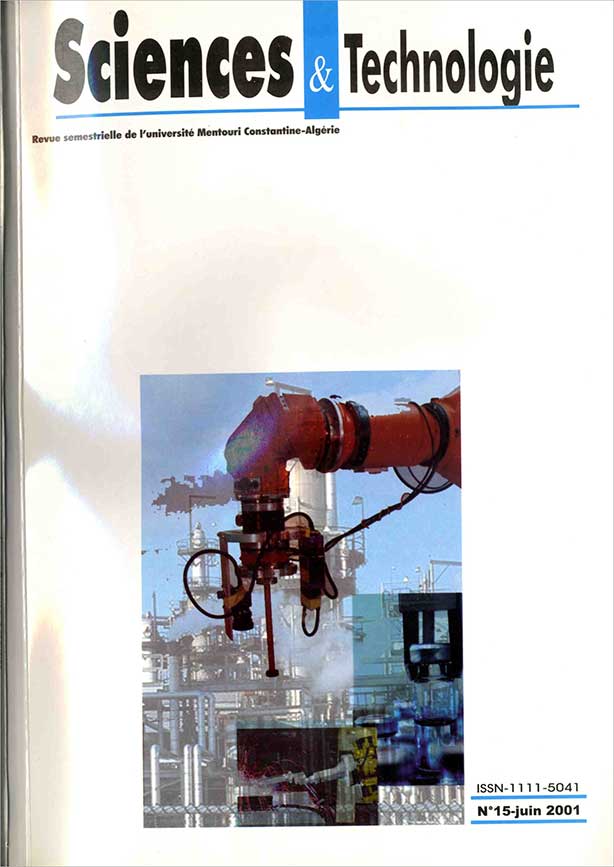ETUDE DU COMPORTEMENT MECANIQUE DES ACIERS HYPEREUTECTOIDES DANS LE DOMAINE DE TEMPERATURE INTERCRITIQUE DYNAMIQUE
Keywords:
Aciers, comportement, microstructure, essai de torsion, plasticitéAbstract
L'étude que nous présentons contribue à une meilleure compréhension de l'influence de la vitesse de déformation et de la température sur le comportement mécanique des aciers hypereutectoïdes dans le domaine de température intercritique dynamique. Les courbes expérimentales obtenues en torsion présentent un intérêt notable dans la mesure où elles permettent de caractériser le comportement mécanique de l'acier 100C6; de plus, elles fournissent des informations précieuses sur la capacité maximale de déformation de l'alliage. Les essais de torsion, menés jusqu'à rupture des éprouvettes, permettent d'effectuer un classement des matériaux selon leur ductilité. Les résultats obtenus sur l'acier 100C6 ont permis de préciser le comportement mécanique à tiède de cet acier.
Les aciers hypoeutectoïdes présentent, dans les domaines de température compris entre Ac1 et Ac3 en condition dynamique, une capacité de déformation élevée résultant de l'évolution, en cours de déformation, des phases a et g et de leurs mécanismes d'adoucissement. Nous nous sommes alors posé la question: quel est le comportement d'un acier hypereutectoïde, donc ne présentant pas de domaine biphasé (a + g) à l'équilibre, lorsqu'il est déformé à une température supérieure à Ac1?
Downloads
References
- Bournicon C., CETIM-Information, 12, (1982), p. 72.
- Rossard C., Thèse Doctorat ès sciences, Paris, (1960).
- Rossard C., Fazan B., IRSID-CESSID, Metz (1968).
- Young-Won, (Y-W) Kim, Acta Metal. Mater., Vol. 40, N° 6, p. 1121. (Année???)
- Bensaha R., Thèse docteur-Ingénieur, Nancy, (1987).
- Rossard C., Rev. Métal., Mars, (1968), p. 481.
- Pierson G., Thèse Docteur INPL, Nancy, (1983).
- Diether U., Journal of Mechanical Working Technology, (1978), p. 207.
- Bensaha R., Metauer G., Revue de Métal., Mars, (1994), p.489.
- P.E.R.A, Report 147. Production Engineering Research Association, England, (1965).
- Keegane J.W., American machinist, 10, (1965), p. 110.
- Husson J., Métaux déformation, 85, (1980), p. 57.
- Bensaha R., Metauer G., Revue de Métal., Avril, (1994), p.639.
- Rothwell A.B., Mém. Scient. Rev. Met., 69, n°6, (1970), p. 413.
- Montheillet F., Colloque de Métallurgie, Saclay, (1981), p. 57.
- Kean D.M., Sellars C.M. and Tegart Mc.G., Iron and steel Inst. Special report, 108, (1968), p.21.
- Lebon A., Rofes-Vernis J. et Rossard C., Mém.Scient. Rev. Métal., LXX, n° 7-8, (1973), p.577.
- Cordea J.N., Hoock R.E, Metal. Trans. 1, Janvier, (1970), p. 111.
- Sainfort G., Ecole d’été de métallurgie physique, Carry-le-Rouet, 20 – 28, septembre1994.
- Bailley J. and Hirsh Y., Proc. Roy. Soc. (A), 267, (1973), p.11.







